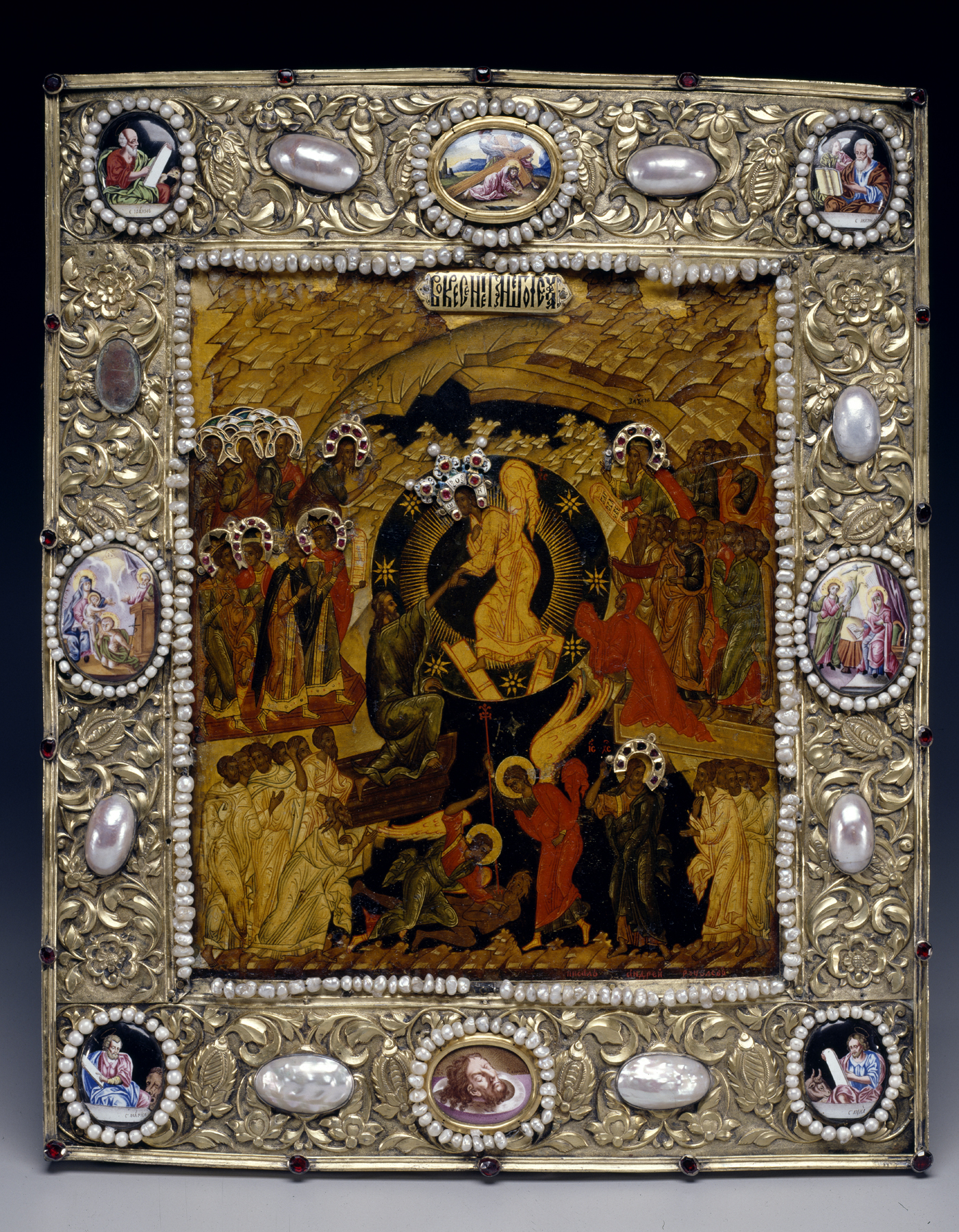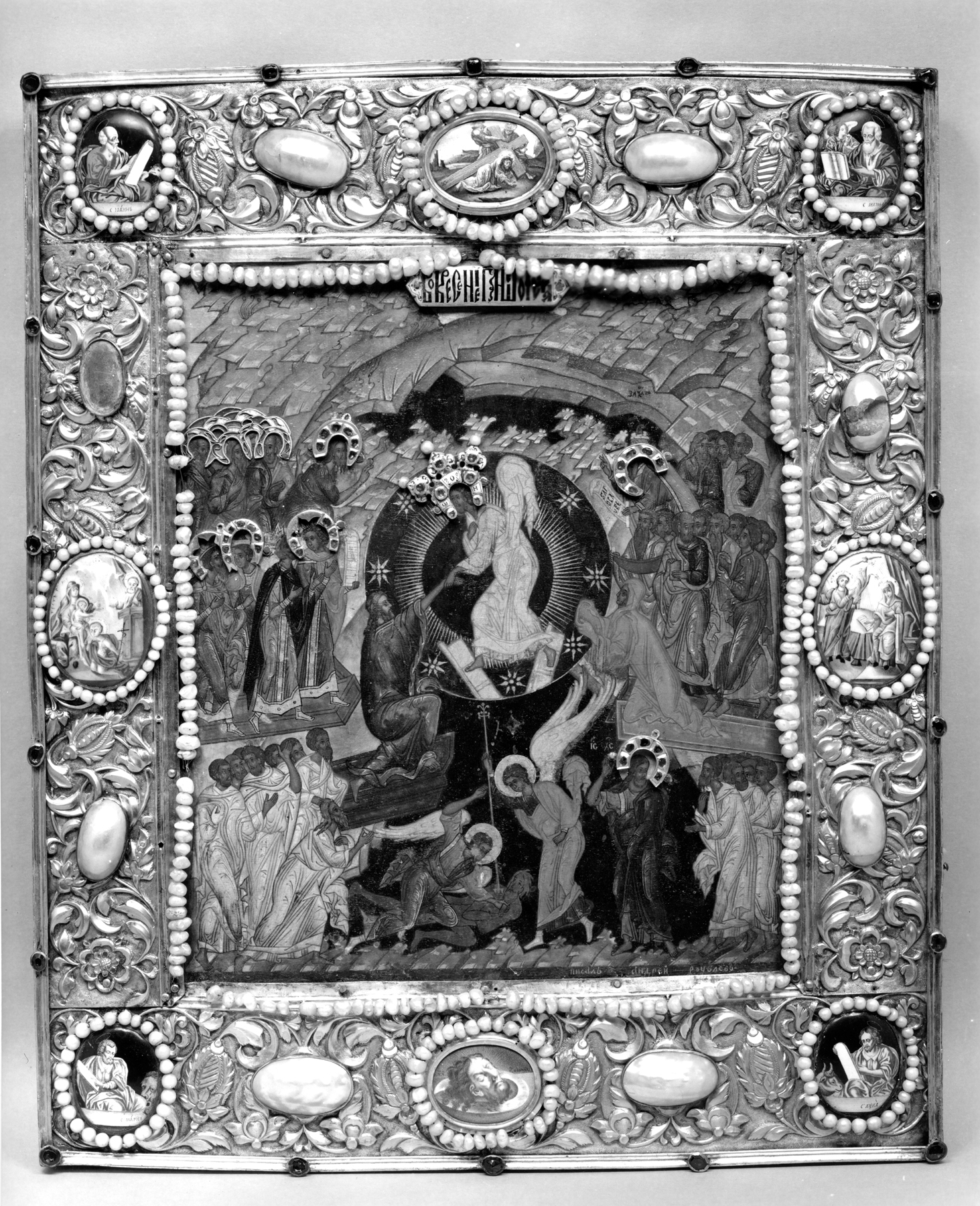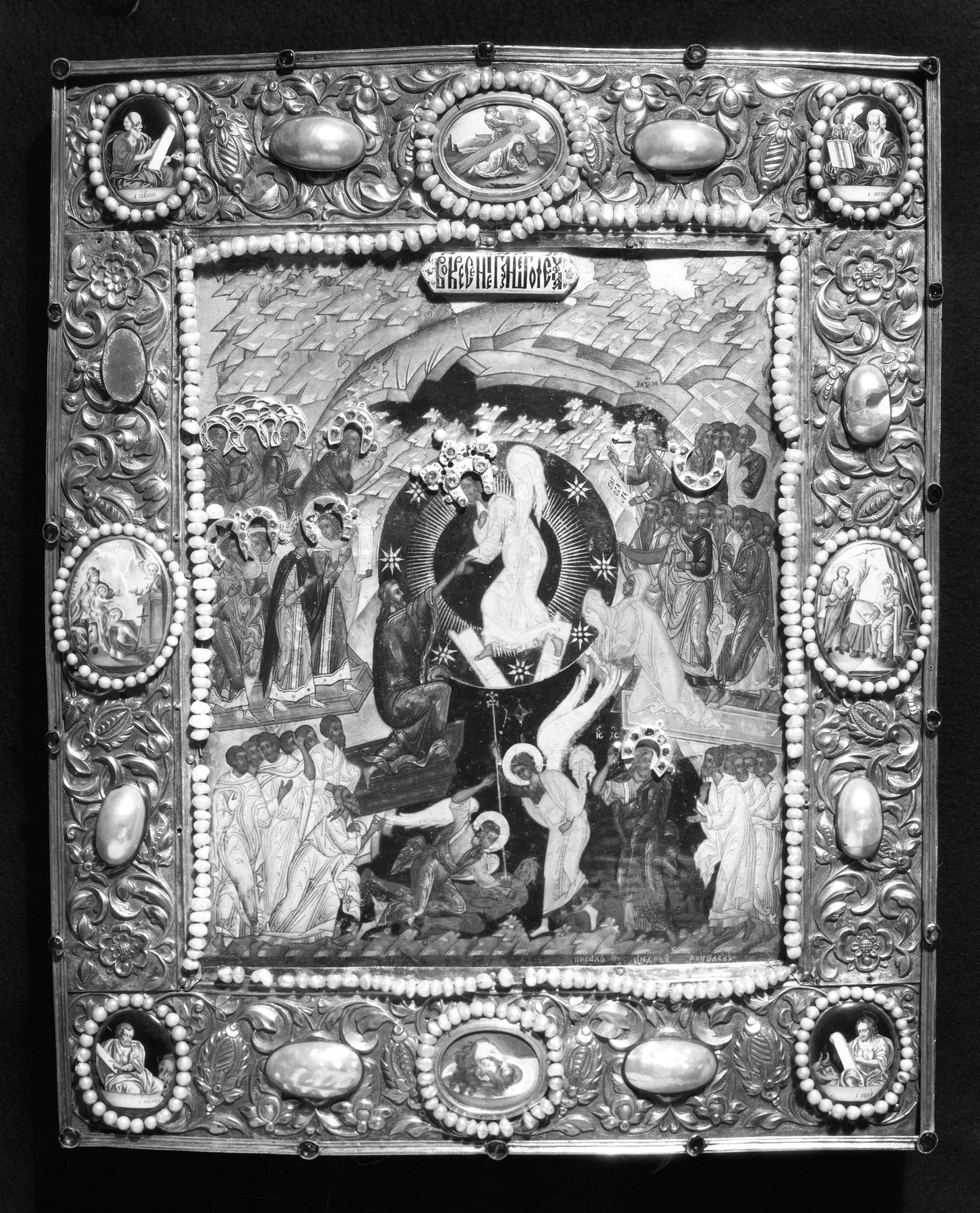Icon of the Descent into Hell
(Medieval Europe , 18th and 19th Centuries )
The composition of this icon is known as Anastasis, or the Harrowing of Hell, and it is the traditional iconographic representation of the Resurrection. Christ, standing on Hell's broken gates, pulls Adam and Eve out from their tombs, with crowds of Old Testament kings and other biblical figures behind them. The crowned figure on Christ's left is Zachariah, holding a scroll that reads, "Blessed is..." Christ appears again at the bottom of the frame, leading a group of souls out of Hell as angels beat down hapless demons. The icon is painted in the style of the 16th or 17th century, and a spurious "Andrei Rublev" signature (likely added later) tries to pass it off as even older.
The gilt metal frame is studded with painted enamels whose European style clashes somewhat with the dimensionless, traditional style of the icon. At the corners are the four evangelists, each with the apocalyptical beast with which he is associated. The other enamels show the Carrying of the Cross, the Annunciation, the severed head of John the Baptist, and the Holy Family with a toddler John the Baptist. Strings of river pearls and large mother-of-pearl "stones" also decorate the frame or "oklad." Such a real pearl border was recalled in later enamel "oklads" by means of white enamel dots.
Inscription
Provenance
Provenance (from the French provenir, 'to come from/forth') is the chronology of the ownership, custody, or location of a historical object. Learn more about provenance at the Walters.
Henry Walters, Baltimore [date of acquisition unknown], by purchase; Walters Art Museum, 1931, by bequest.
Exhibitions
| 1996-1997 | Russian Enamels. The Walters Art Gallery, Baltimore. |
| 1987-1992 | Artful Deception: The Craft of the Forger. The Walters Art Gallery, Baltimore; Edsel & Eleanor Ford House, Grosse Pointe Shores; Dallas Museum of Art, Dallas; Oklahoma City Museum of Art, Oklahoma City; Portland Museum of Art, Portland; The Fine Arts Center at Cheekwood, Nashville; Phoenix Art Museum, Phoenix; Columbia Museum of Art, Columbia; Crocker Art Museum, Sacramento; Elvehjem Museum of Art, Madison; Memorial Art Gallery of the University of Rochester, Rochester; The Barnum Museum, Bridgeport. |
| 1959-1960 | Russian Art: Icons and Decorative Arts from the Origin to the Twentieth Century. The Walters Art Gallery, Baltimore. |
Conservation
| Date | Description | Narrative |
|---|---|---|
| 9/18/1951 | Treatment | repaired |
| 10/30/1959 | Treatment | cleaned; repaired |
| 9/21/1965 | Examination | examined for exhibition |
| 11/15/1965 | Treatment | repaired; other |
| 11/21/1988 | Treatment | cleaned; loss compensation; repaired |
| 11/22/1988 | Treatment | cleaned; loss compensation |
| 2/12/1989 | Loan Consideration | examined for loan |
| 4/6/1989 | Treatment | repaired |
| 2/15/1996 | Treatment | cleaned; repaired; loss compensation |
| 4/4/1996 | Treatment | cleaned; coated; repaired |
Geographies
Russia (Place of Origin)
Measurements
H: 15 5/8 x W: 12 7/8 in. (39.7 x 32.7 cm)
Credit Line
Acquired by Henry Walters
Location in Museum
Not on view
Accession Number
In libraries, galleries, museums, and archives, an accession number is a unique identifier assigned to each object in the collection.
In libraries, galleries, museums, and archives, an accession number is a unique identifier assigned to each object in the collection.
37.1074






